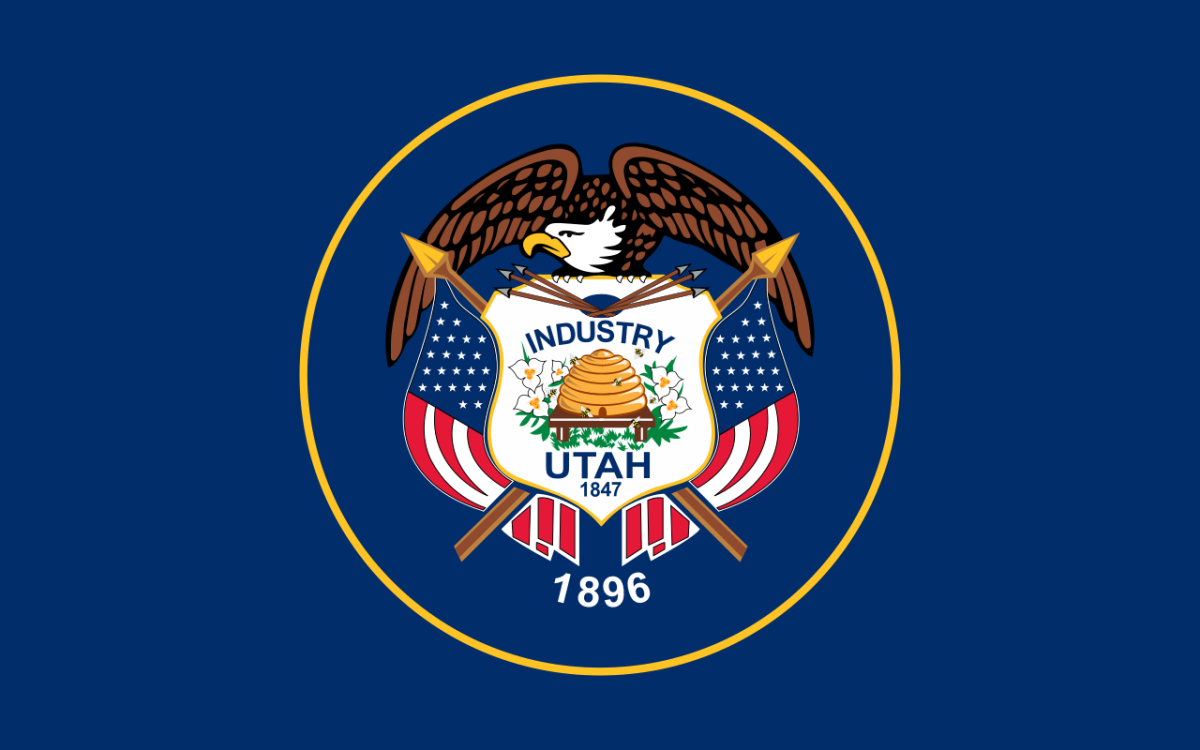Utah Medical Malpractice Laws

In Utah, the intricate procedural requirements of medical malpractice law, including strict timeframes for claim filing, demand the assistance of a lawyer with the knowledge and experience to handle its complexities. Many individuals across the state, including legal professionals, have misconceptions about injuries relating to medical malpractice. This situation makes it challenging for a victim to get accurate information about their legal options and rights under the law.
Based on records shown by the National Practitioner Data Bank, there were 926 cases of medical malpractice reported in the state of Utah from 2012 to 2022 that were settled, which amounted to payouts of more than $250 million. The data also show that physicians have the highest number of medical malpractice payments reported. The NPDB data only shows reports involving professionals in the medical field, such as physicians, chiropractors, dentists, nurses, pharmacists, and social workers.
In March 2023, a man with a medical malpractice claim received the largest personal injury verdict recorded in Utah. The plaintiff had a biopsy taken, and the specimen was misdiagnosed to be a cancerous tumor in his brain. He was advised to have open surgery to remove the tumor. However, during the operation, the patient suffered a stroke after the neurosurgeon removed an artery and brain tissue. The right side of the patient’s body was paralyzed, and he lost his ability to speak. He filed a medical malpractice lawsuit, and according to reports, no cancer was found in the patient. He won the lawsuit and received $11.2 million in damages.
This article will dive deeper into medical malpractice law, exploring various topics like situations that fall under medical malpractice, common healthcare providers involved, exemptions from being sued, and how much an individual can get from a medical malpractice lawsuit.
What Qualifies as Medical Malpractice in Utah?
Under Utah law, medical malpractice occurs when a healthcare provider deviates from the standard of care expected of them, and this causes an injury to the patient or aggravates the patient’s illness.
Leaving a foreign object inside the patient’s body, operating on the wrong part of the body, and cosmetic surgery that results in disfigurements and complications are just a few examples of medical malpractice.
In Utah, there is also a fine line between medical malpractice and medical negligence. When a medical provider’s mistake or lack of action leads to substandard care, this can be referred to as medical negligence. A healthcare provider can be negligent without the intent to harm or be malicious. On the other hand, medical negligence is an element of all medical malpractice cases, and the presence of injuries to the patient’s body is what sets them apart. If the provider’s subpar care or neglect worsens the patient’s condition or causes injuries and even financial losses, then it is considered medical malpractice.
Who Can You Sue for Medical Malpractice in Utah?
The majority of healthcare providers can still be held responsible for medical malpractice once it is proven that they fell short of providing standard care to their patients. Keep in mind that healthcare providers don’t just refer to doctors, dentists, nurses, midwives, psychiatrists, and surgeons, which means that you may also file a claim against medical institutions such as hospitals, clinics, hospices, and nursing care facilities.
When an individual decides to file a medical malpractice claim in Utah, the patient has 90 days to inform all the defendants involved in the case about the lawsuit. The notice should include the identified people involved, when and where the incident happened, the specific allegations, and the injuries sustained.
Additionally, the plaintiff should be able to request a pre-litigation panel review through Utah’s Division of Occupational and Professional Licensing within 60 days after the first notice is sent. If the panel decides that the medical malpractice case is not justified enough, the plaintiff may submit an affidavit of merit as additional support for their claim.
Exemptions
Utah has laws that protect medical providers from lawsuits when they offer their help in cases of emergencies and when offering their sympathy to their patients and their family members. Two of these laws that exempt medical providers from liability are as follows:
The Good Samaritan Law: This law states that an individual or even a medical provider will not be civilly liable if they respond to an emergency to help someone in need for free and in good faith. However, the same law does not excuse acts of extreme negligence or intent to cause harm, meaning individuals found to have acted carelessly or in bad faith can still be liable for their actions.
“I’m Sorry” Law: Expressions of apology, condolence, compassion, and the like may not be used as proof of error in a medical malpractice case. Statements about the unfortunate result of a procedure or treatment are also protected. However, according to Claims and Litigation Management, several states, including Utah, only offer partial immunity in these cases. Meaning that expressions of apologies that admit fault are still admissible in court.
Medical Malpractice Liability Insurance Requirements
Utah doesn’t mandate that physicians and other medical providers carry medical liability insurance. However, many hospitals in the state require their doctors to obtain coverage. Even if the government or hospital doesn’t require it, medical practitioners should still consider getting liability insurance because it can shield them financially if someone sues them for medical malpractice.
The amount of medical malpractice insurance coverage depends on the provider’s area of specialization. Most policies usually have a coverage limit of $100,000 to $300,000 per claim per year and $1 million to $3 million for total claims in a single year.
What Is the Statute of Limitations in Utah for Medical Malpractice Cases?
The statute of limitations sets a timeframe for individuals who want to file lawsuits or claims. In Utah, victims of medical malpractice must bring an action within two years of their injury; otherwise, they could lose their right to sue for the harm suffered.
There are exceptions to the statute of limitation. If the injury is not discovered right away, the statute of limitations will start from the day it is found, which refers to the discovery rule.
Utah also has the “minority tolling” rule, which extends the statute of limitations for medical malpractice cases involving minors until they reach 18 years old. Exceptions are also given in the event that the plaintiff reports for military duty or the defendant leaves the state or files for bankruptcy.
With all these numbers about time frames in play, one important thing to keep in mind is the statute of repose. Individuals have four years from the date of the alleged malpractice to file a claim, regardless of when they discovered the injury.
Legal assistance is vital in identifying the statute of limitations that applies to a particular case. Each medical malpractice case is different. To ensure that the deadline for filing a case is met, it is advisable that the claimant seek the help of a medical malpractice or personal injury attorney.
What Do You Need to Prove in a Utah Medical Malpractice Case?
In Utah, medical malpractice doesn’t always come from a failed procedure, and dissatisfaction with a surgical procedure doesn’t give patients a warrant to file a lawsuit against the doctor. Proving medical malpractice is a difficult and tedious task. A claimant must prove the following four elements of medical malpractice:
Professional Relationship: A recognized patient-doctor relationship needs to be established before a formal claim can be filed. This connection indicates that the doctor must abide by the standards of care for the patient at all times.
Breach of Standard Care: This happens when a healthcare professional fails to meet the required standard of care, which is determined by the degree of proficiency and knowledge that a colleague in the same field would show.
Causation of Harm: The complainant must show that their injury was due to substandard medical care. A claim can’t move forward without establishing the connection between the breach of standard care and the injury.
Incurred Damages: The patient faced real financial losses from lost income, medical costs, and medication expenses due to the sustained injuries.
Apart from the key elements mentioned above, medical experts can also aid in building a strong medical malpractice case. Utah doesn’t have any set laws about medical experts; the legal framework has evolved to the point where their testimony is needed to prove a breach of medical standards.
An affidavit of merit may be used and submitted if a patient wants to prove to the pre-litigation panel that the case can be heard in court. This can be done after the pre-litigation panel finds that the plaintiff’s case doesn’t have enough merit to stand in court after their initial review. The document should include a qualified medical expert’s assessment that the case being filed is reasonable and warranted.
Because medicine has its own language, medical experts are needed to help ordinary people understand complicated medical issues. These experts can also explain how the injuries of the patient can be related or not to the medical malpractice claim at hand. To testify effectively, the expert witness must have extensive experience, education, and professional training.
Another thing to consider in relation to proving a medical malpractice case is informed consent. According to the American Medical Association Journal of Ethics, a person who is of legal age and sound mind may decide what can be medically done to them. If a patient undergoes a procedure without knowing about it, the medical practitioner can face a medical malpractice lawsuit for violating the patient’s rights. Healthcare providers must provide adequate medical information to patients to help them make informed decisions and for doctors to avoid lawsuits.
How Much Can You Sue for Medical Malpractice in Utah?
Going for surgery, whether necessary or optional, requires the patient to put their trust in their medical provider. When a doctor makes a mistake, this breaks trust and may result in injuries to the patient. Utah residents who have suffered financial, physical, and psychological harm due to medical malpractice have a right under the law to recover compensation.
Types of Damages
The value of a medical malpractice claim in Utah depends on the extent of the injuries sustained by the victim. The claimant or plaintiff may be eligible for several kinds of compensatory damages, such as:
Indemnity for therapy of unforeseen discomforts, like pain and suffering.
Medical expenses, including transport to hospitals and doctors for checkups.
Lost income for not being able to report for work due to the injury.
If willful harm or extreme negligence on the part of the medical provider is proven, punitive damages may also be awarded to the victim.
Gathering enough evidence and supporting it with documentation is a significant task for lawyers to build a strong claim, but it will greatly help in identifying the fair amount of compensation that victims can recover.
While being able to recover the right amount of compensation gives victims great relief, they have to consider if there are caps on the awarded damages. Utah limits noneconomic damages to $450,000. Noneconomic damages are considered subjective damages, not quantifiable by money, like decreased quality of life, emotional distress, and pain and suffering. When it comes to economic damages, such as lost income and medical expenses, Utah law sets no limit on the recoverable amount.
Negligence System
If a patient’s actions partially contribute to their injuries, such as non-compliance with post-operative care, the modified comparative negligence rule applies in Utah. This will allow patients to obtain compensation in medical malpractice lawsuits but will reduce the amount they can recover depending on their percentage of fault, which should be below 50%.
So, if a patient’s damages total $100,000 and are found to be 10% at fault, they will receive a reduced amount of $90,000. If the patient’s percentage of fault goes beyond 50%, they will forfeit their right to get compensation.
Methods of Obtaining Compensation
In Utah, it is common practice to resolve medical malpractice cases outside of the courtroom as one way of getting compensation. Following the filing of a medical malpractice claim, some plaintiffs voluntarily choose to have arbitration to resolve the case rather than going to trial.
A pre-litigation panel may be used to choose binding arbitration, which can help both parties arrive at agreements to settle the claim. There are also arbitration agreements that are presented to patients before they receive treatment from a doctor. It states that if they get injured from any procedure under the doctor’s care, they will be required to go through the arbitration process.
In the event that the arbitration process is not successful, the claim moves forward to trial, which will require a number of procedural stages to resolve the case. The lawyers will conduct in-depth investigations and preparation to increase the likelihood of getting favorable results.
How Much Does It Cost to Pursue a Medical Malpractice Case in Utah?
When pursuing a medical malpractice lawsuit, considering financial factors is essential. The majority of costs are made up of fees for attorneys, expert witnesses, and the court. Usually, the legal cost is the most expensive part. If you’re pursuing litigation on your own, you may incur higher personal costs than if you let an attorney do the work for you.
Most lawyers take medical malpractice lawsuits on a contingency-fee basis. Instead of charging clients in advance, they take a portion of the client’s awarded compensation, which is usually one-third of the amount. Certain states have caps or limits placed on lawyer’s fees, so the rate can change, particularly if the case goes to trial.
When it comes to court filing fees, the price ranges from $100 to $500. The fees cover the cost of duplicating medical documents, depending on the length of the record. Law firms usually charge high rates for hiring expert witnesses. The fees they charge are justifiable, as lawyers use the testimony of these witnesses to provide evidence of deviations from medical norms.
Legal Resources for Medical Malpractice Victims in Utah
Going through a medical malpractice injury is a heavy burden, not just for the victim but also for their family. Knowing they have enough emotional support from family and friends can help ease that burden. Individuals can also turn to online resources for different questions they have in mind regarding their specific situation, which can help in relieving mental stress.
Utah’s Division of Occupational and Professional Licensing
Utah’s Division of Occupational and Professional Licensing is mandated by law to oversee the licensing and regulation of different professions. It safeguards public interests and promotes commercial integrity through these processes. Apart from licensing, it also assists in investigations for claims where professionals are involved.
Utah Legal Services
The Utah Legal Services offers legal assistance for low- to no-income residents in Utah. Although they don’t handle personal injury or medical malpractice cases, they can assist victims and their families in finding volunteers or pro-bono lawyers who are willing to help.
American Medical Association Journal of Ethics
The American Medical Association Journal of Ethics offers support exclusively to medical students and professionals as they make moral decisions that are beneficial to their patients and the community. It publishes journals with a new topic monthly that has cases, expert opinions, and educational pieces. It also includes discussions on social and cultural environment perspectives and various educational tools. The published articles, however, can be viewed by the general public, which they can use as a reference or guide.
Expertise.com StaffAuthor
Step into the world of Expertise.com, your go-to hub for credible insights. We don't take accuracy lightly around here. Our squad of expert reviewers, each a maestro in their field, has given the green light to every single article you'll find. From rigorous fact-checking to meticulous evaluations of service providers, we've got it all covered. So feel free to dive in and explore. The information you'll uncover has been stamped with the seal of approval by our top-notch experts.




